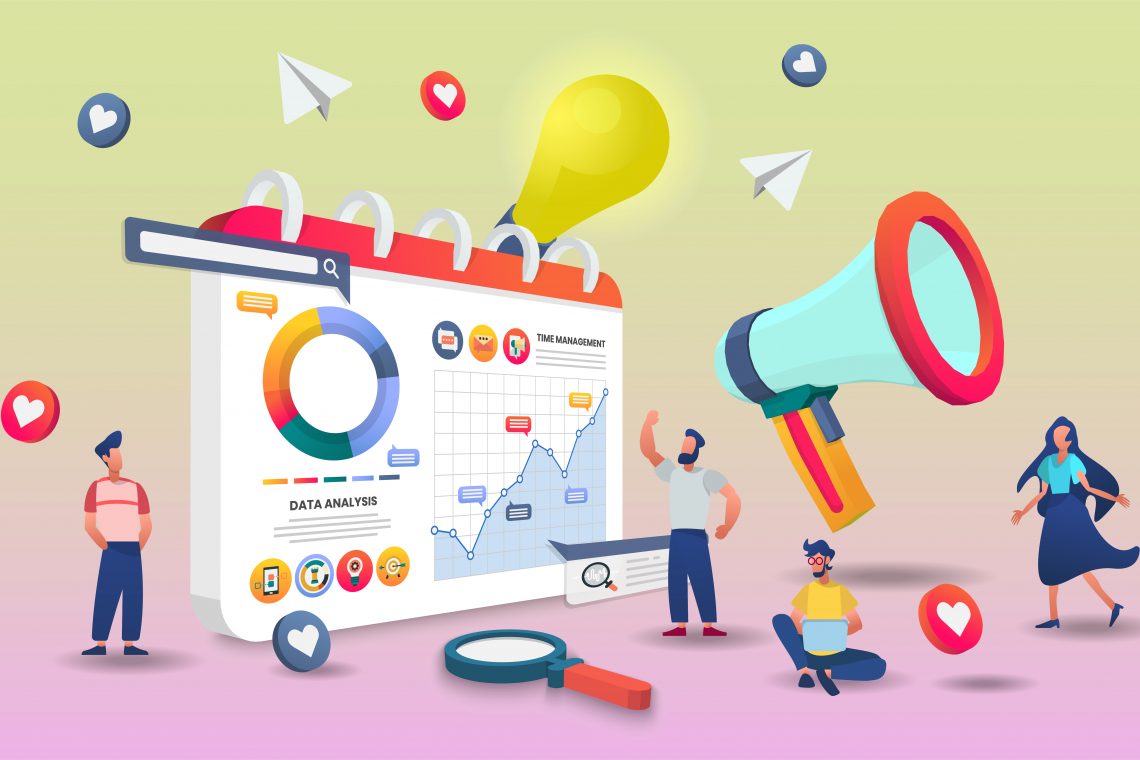As an organization grows, digital has become an integral part of who they are, what they do, and what they achieve. Due to this, a digital transformation strategy becomes more integrated into the company’s marketing approach. While this is a digital age, it would be a mistake if you do not plan aplan for digital strategy separately.
Recently, we also build our company’s digital marketing strategy with the guidance of the best digital marketing agency in Chandigarh. With their transparent work, we get to know about the simple steps for building a digital marketing strategy.
In this article, we are sharing the 7 best steps to build your digital marketing strategy in 2023.
What Is Digital Marketing Strategy?
Digital marketing strategy defines how a company can use digital channels, platforms, and thinking to achieve its business objectives. It incorporates clear targets, prioritizes audiences, identifies customer needs and behavior, and specifies channel usage and platform requirements. To put it simply, it outlines how you intend to stay relevant digitally.
Digital marketing and branding overlap in many ways, including user experience (UX), customer experience (CX), and customer care:
- Artificial Intelligence (AI) and the Internet of Things (IoT) integrate the brand into the product experience.
- A content strategy entails not just traditional marketing assets, but all content that can be leveraged to grow a business.
- Innovation in the digital sector creates new products, experiences, and services that are worth marketing.
Effective Digital Marketing Strategy: How to Create it?
We’ve identified 7 steps that a modern digital marketing strategy should follow when working with clients from a variety of industries and markets.
-
Determine the Potential
In today’s market, digital is imperative for staying current, competitive, and attractive. Which channel do your customers use to interact with you? What is the visibility of your brand and how many inbound leads have converted to sales? In case you do not know all this, you are probably already behind.
-
Define Digital Marketing’s Role
How does digital marketing affect business? Instead of simply listing objectives, this should be a deliberate vision and series of intentional choices that indicate what digital marketing can and should accomplish for the organization.
You have to understand how digital marketing relates to other elements in your ecosystem. A list of these elements usually includes brand, data, marketing, content, customer experience, user interface, CRM, customer support/care, product innovation, and media. The simplest way to clarify your focus is to write down what is at the stake and what opportunities are available. As a result of your assessment, your executive team will be able to see how digital impacts the business through key performance indicators (KPIs).
-
Identify Your Target Audiences
Map the journey of the customer in detail, identify value exchanges along the way, and create robust digital profiles (what they want, how they behave, how to engage with them, and with whom else they interact). Profiles usually begin with traditional segmentation, but you need to go further to identify behavior, interactions, functionality, and experience needs.
The digital profile for many clients, especially those in B2B, does not necessarily focus on who the customer is, but it focuses on the objectives of the target audience. When you do this early , you can meet customer needs and match your objectives accordingly.
-
Utilize a Multi-Channel Approach
Create a modern channel strategy by activating key channels such as search, web, social, and email. In the case of specific platforms and touchpoints, there may be a need to develop unique ‘channel charters’ that describe how and why they should be used, and what internal resources would be required to take advantage of them effectively.
-
Determine the Resources Required
Based on the information discussed above to this point, determine what you need to use against this strategy, including headcount, budget, and marketing technology (platforms, APIs, services, data integration).
Governance is also crucial, which is why we create guidelines and playbooks for the people, tools, and processes. In current times, an increasing number of companies don’t take governance seriously. However, it is much needed so that people know their roles and also know how they can contribute to the program’s success.
-
Generate a Roadmap for Execution
Organize initiatives and prioritize them into a roadmap that takes you from strategy to execution, even if it takes months to complete. But don’t hesitate or be cautious, and don’t wait for annual planning cycles. Instead, keep yourself ready and flexible for alternative scenarios available to you. Organizational digital transformation takes time, but marketing should be the most agile driver and ready to act.
-
Support Your Digital Transformation Strategy
Explore how digital marketing can be more than just a day-to-day function in this new era of digital transformation and act as a powerful lever. This could be achieved through storytelling, innovation of digital services, or listening to customers’ voices to determine media spending uncover engagement opportunities, and find new audiences.
Final Words
All in all, having a digital marketing strategy that incorporates all seven of these elements will allow your digital team – and the executive suite – to gain a more complete understanding of how digital marketing affects your company. In case you and your senior executives do not know, then take help from the best providers of digital marketing services in Chandigarh, as we do for our business.


